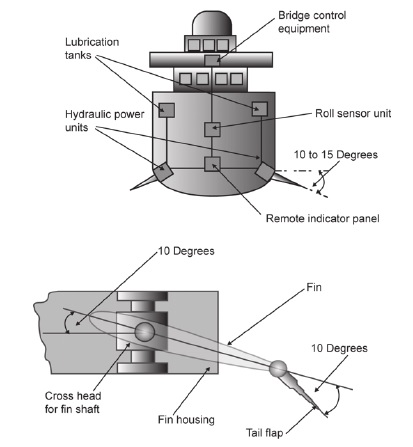
Fin Stabilisers for Controlling Ships Motion
Stabilising fins are fitted to ship's sides below the waterline to
reduce rolling of the hull by wave action.
The fins achieve this by imposing an equal and opposite
motion. Retractable fins of aerofoil section use the forward
velocity of the ship to create this opposing motion. As
the ship rolls to starboard, the starboard fin is set by a
gyroscope signal so that the leading edge of the fin is set
above the axis of tilt, giving an upward thrust. The port fin is
set in the opposite tilt, with its leading edge below the axis of
tilt, giving a downward thrust, and vice versa when the ship
rolls to port.


